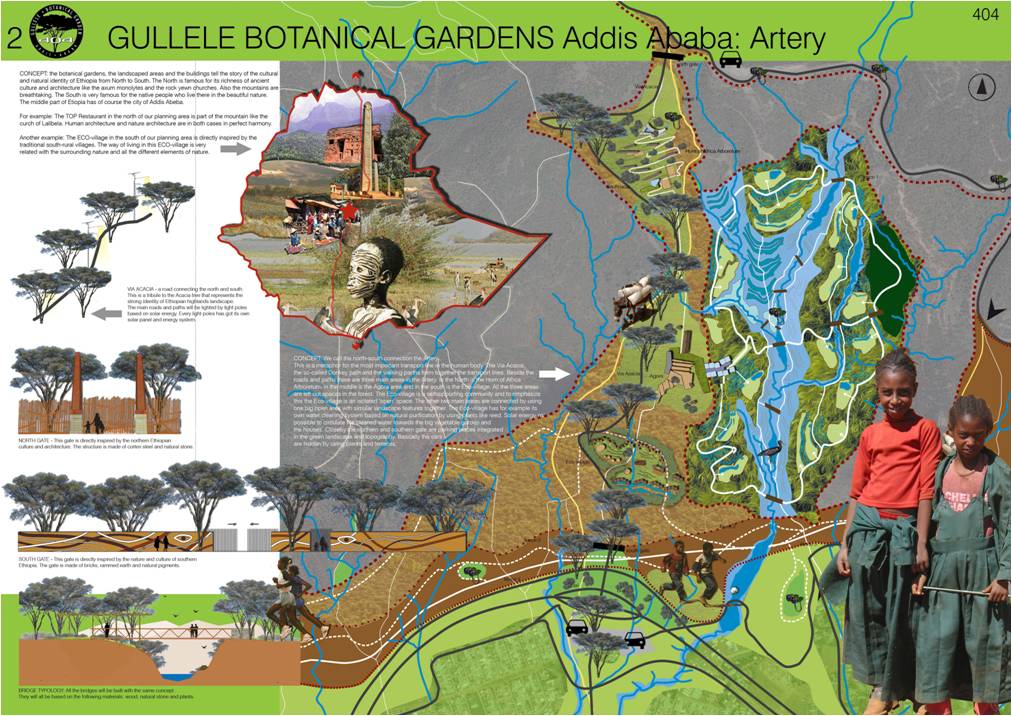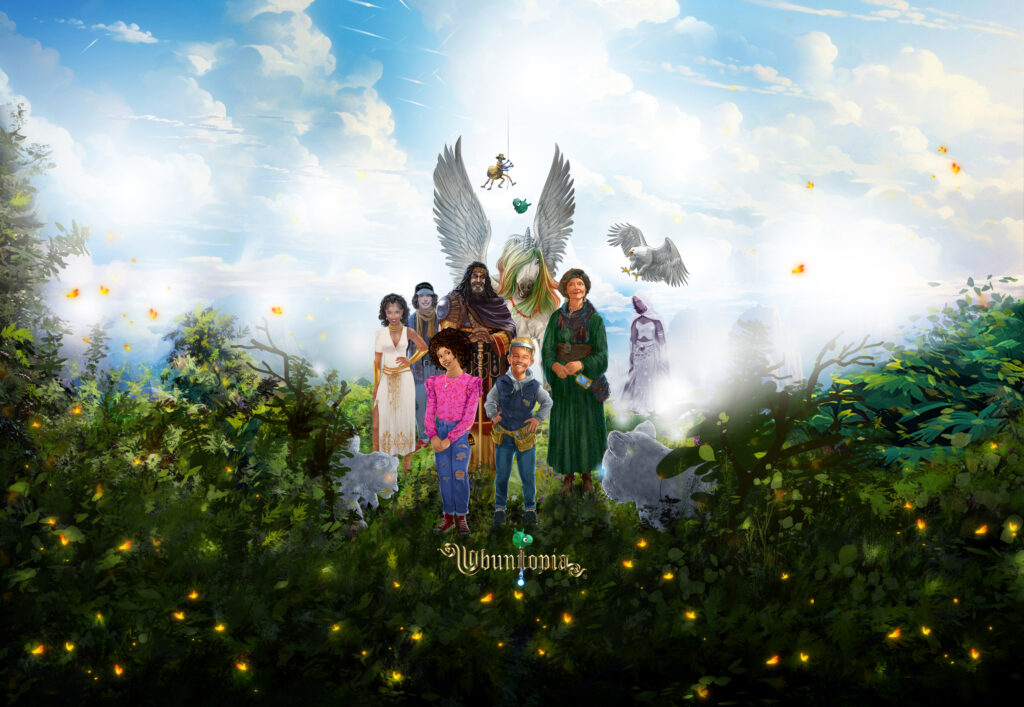Gullele Botanical Garden
A Green Renaissance from Dry Lands to a Thriving Cultural & Leisure Destination
Sustainable area development at the intersection of ecology, culture, and storytelling
Gullele Botanical Garden and Cultural Village is an innovative project that integrates ecology, culture, and tourism into a sustainable and socially driven area development. Located in Addis Ababa, Ethiopia, this project builds on an existing botanical garden, transforming it into a thriving destination for eco-tourism, leisure, and cultural heritage. Developed with a comprehensive vision for sustainable spatial planning, cultural storytelling, and economic impact.
Vision and Objectives
The aim of Gullele Botanical Garden and Cultural Village is to create a model for future-proof destinations where environmental conservation, cultural heritage, and economic opportunities reinforce each other. This is achieved by:
- Restoring biodiversity: Transitioning from monoculture to a resilient ecosystem.
- Cultural anchoring: Integrating local traditions and crafts into the area’s development.
- Sustainable tourism and leisure: Creating immersive experiences that celebrate nature and heritage.
- Economic inclusion: Introducing new business models that provide sustainable opportunities for local communities.
- Storytelling as a connecting force: Using narratives to engage visitors and communities with the site and its history.
The Challenge
The project builds on a botanical garden initially established by Addis Ababa University. However, large-scale planting of eucalyptus—a fast-growing but highly water-consuming tree species—led to severe drought and a decline in biodiversity. At the same time, eucalyptus is economically vital for local communities, widely used for construction and fuel. This made direct removal or replacement of the trees unfeasible without viable socio-economic alternatives.
Beyond ecological restoration, it was also crucial to enhance the area’s cultural and recreational value. The Cultural Village became an integral part of the development, serving as a hub where local communities could share their traditions, crafts, and stories with visitors. This approach fostered social cohesion while creating new economic opportunities through cultural tourism and sustainable leisure activities.
Strategic Approach
To achieve a sustainable balance between environmental conservation, cultural heritage, and economic viability, the project focused on:
– Gradual reforestation and diversification
- Phased replacement of eucalyptus with native species of similar economic value.
- Introduction of agroforestry techniques to combine ecological and economic benefits.
- New economic opportunities for the local community
- Developing sustainable timber production and alternative supply chains.
- Promoting eco-tourism, leisure experiences, and artisanal entrepreneurship as additional revenue sources.
– Cultural and social integration through the Cultural Village
- Collaborating with local communities to incorporate traditional knowledge and narratives into the development.
- Establishing a vibrant cultural and leisure hub featuring crafts, music, dance, and gastronomy.
– Spatial vision and strategic process management
- Designing an area concept where nature, recreation, and community functions harmoniously coexist.
- Managing the process in collaboration with public and private stakeholders, ensuring inclusive decision-making.
Scope of Services
For this project, the following expertise was applied:
🔹 Sustainable spatial development: Integrating environmental conservation, cultural heritage, and tourism into a strategic area vision.
🔹 Concept development and storytelling: Establishing a strong narrative foundation for the project.
🔹 Stakeholder management and consortium formation: Bringing together and leading relevant parties from tourism, culture, and environmental sectors.
🔹 Process management and mission coordination: Structuring and guiding international collaborations and development phases.
Status and Future Plans
The project underwent extensive concept development, focusing on balancing ecological restoration, cultural heritage, and sustainable tourism. A strategic vision, stakeholder analysis, and development plans were established, The insights and concepts developed remain valuable as a reference for future sustainable area developments in similar contexts.
Client
This project was funded by GTZ and EWCA, supported by the Dutch government.




